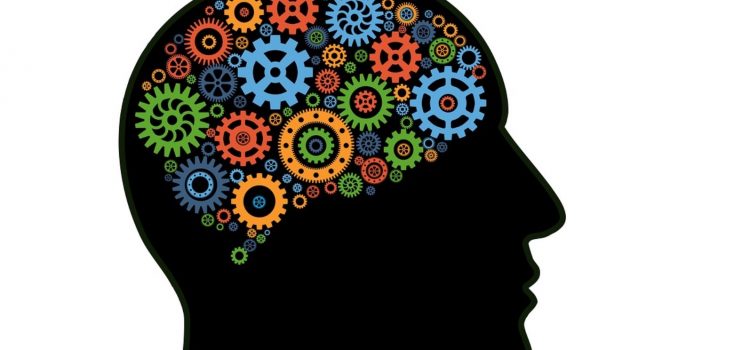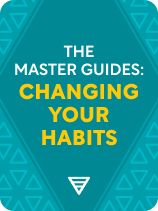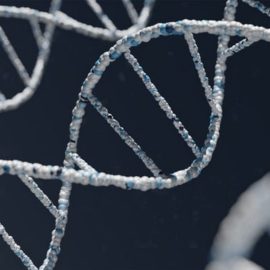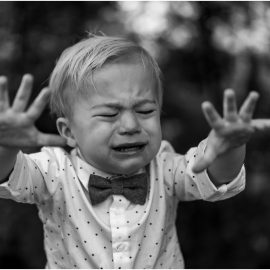

This article is an excerpt from the Shortform book guide to "The Master Guides: Changing Your Habits" by Shortform. Shortform has the world's best summaries and analyses of books you should be reading.
Like this article? Sign up for a free trial here.
What does the science of habits tell us about our brains? What are the different models of habit formation?
There are two primary models for understanding habits and how they form. With minor variations, most authors describe habits in the same way, which we’ll call the Standard Model. Meanwhile, in Tiny Habits, Stanford behavioral scientist BJ Fogg presents the Fogg Behavior Model, a different approach to understanding habits.
Let’s look at the two models of habits that are often in conflict with one another.
The Standard Model
A habit is something you do without thinking because the behavior is programmed into your brain as an automatic response. There are several components to the science of habits: the cue, the routine, the reward, the craving, repetition, and the belief.
The Cue
The cue is what starts the automatic program running in your brain. Cues are also called “prompts” or “triggers.” They can be either external (something in your environment) or internal (your thoughts or emotions). For example, say you have a habit of drinking coffee in the morning. This habit might have an external cue, such as the smell of coffee from other coffee drinkers in the office. Or it might have an internal cue, such as feeling drowsy in the morning.
The Routine
The routine is what you do automatically when the program runs. In our coffee example, the routine might consist of getting your coffee cup, going to the coffee maker in the break room, and pouring yourself a cup of coffee.
The Reward
The reward is a positive sensation that your brain associates with the routine or with completing the routine. The reward gives your brain a reason to execute the routine. It could be a pleasurable experience, or it could be relief from something negative such as pain or fear. Either way, to be part of the habit, the reward must be immediate. This is because your brain processes things that happen later on separately from the habit “program,” even if they’re direct consequences of the routine. So behaviors that generate immediate pleasure or relief but have negative long-term consequences lead to bad habits.
According to Nir Eyal, the reward must also be variable—in other words, it shouldn’t be predictable. This is especially true for rewards that suffer from diminishing returns, meaning they’re less rewarding the more times you receive them.
The Craving
The craving is a powerful urge to execute the routine in anticipation of the reward. Some authors, such as Clear, list this as an essential component of habits. They argue that the cue triggers the craving, which in turn causes you to execute the routine. Others, such as Barbara Oakley, leave out the craving step, stating that you perform the routine automatically in response to the cue.
Repetition
Repetition is necessary for habits to form. This is partly because, as we said before, your brain executes the routine in anticipation of the reward—to anticipate what the outcome of a certain behavior feels like, you must have done it before. You also have to do something many times before the movements or other actions involved can become automatic. In other words, it takes time and repetition for your brain to build the routine for the habit program.
Eyal argues that habit formation is not just a matter of repetition, but of investment: The more time, energy, and value you put into something, the stronger your habitual attachment to it becomes. Investment gives you something to lose (or cease to benefit from) if you were to cease engaging in the habit, and so fear of loss makes the habit stronger.
The Belief
According to Oakley, the belief is an additional component of the habit program in your brain. She observes that every habit tends to be grounded in something you believe about yourself or about the world you live in.
Most other authors don’t consider underlying beliefs to be part of the habit itself. However, they would probably concede that your underlying beliefs do affect your habits because these beliefs influence what behaviors you’re willing to do or repeat and color how you perceive the reward.
The Fogg Behavior Model
Instead of viewing a habit as a routine that your brain executes automatically in response to a cue and in anticipation of an immediate reward, the Fogg Behavior Model postulates that you’ll perform a given action when your ability to do it multiplied by your motivation to do it exceeds a certain threshold.
For example, suppose you’re on a camping trip in central Idaho when for some reason you start thinking about donuts. To eat a donut, you would have to hike several miles back to your car, drive almost two hours back to the nearest town, and then find a bakery. So, most likely, you wouldn’t eat a donut because it’s just too difficult to get one—your ability to eat a donut is low right now. But, if you were extremely motivated to go find a donut, you could. Conversely, suppose you’re at a conference and there’s a box of donuts on a table with a sign that says, “Free—Take one.” Now, your ability to eat a donut is extremely high, so if you have any motivation at all to eat one, you probably will.
Fogg illustrates his behavior model graphically:
Fogg’s behavior model applies to all actions, not just habitual ones, but it can be used to explain habitual behavior.
In Fogg’s model, the cue (or prompt) of a habit is anything that alerts you to the possibility of performing a certain action. For example, if you have a habit of snacking to relieve stress, feeling stressed alerts you to the possibility of relieving your stress by snacking.
The more you do something, the better you get at doing it: in other words, your ability increases. And the more you crave something, or anticipate a reward for doing it, the greater your motivation to do it will be. Both of these factors increase the likelihood that your combined ability and motivation will be above the threshold and you’ll actually do the behavior whenever you have the opportunity to.
For example, if you’ve had a snacking habit for a long time, you probably have a good supply of snacks on hand. That increases your ability to snack because it makes it easier to access the snack food than if you had to go out and buy it first. And the stronger your cravings for snacks are, the more motivation you’ll have to snack.
Thus, the Fogg Behavior Model helps to explain how habits form: The more you do something, especially something with a built-in reward, the more likely you are to do it again.

———End of Preview———
Like what you just read? Read the rest of the world's best book summary and analysis of Shortform's "The Master Guides: Changing Your Habits" at Shortform.
Here's what you'll find in our full The Master Guides: Changing Your Habits summary:
- How even the smallest habit improvements can have a big impact on your life
- Advice from the top five best-selling authors on changing your habits
- How to identify the behaviors that keep you stuck in the same patterns






